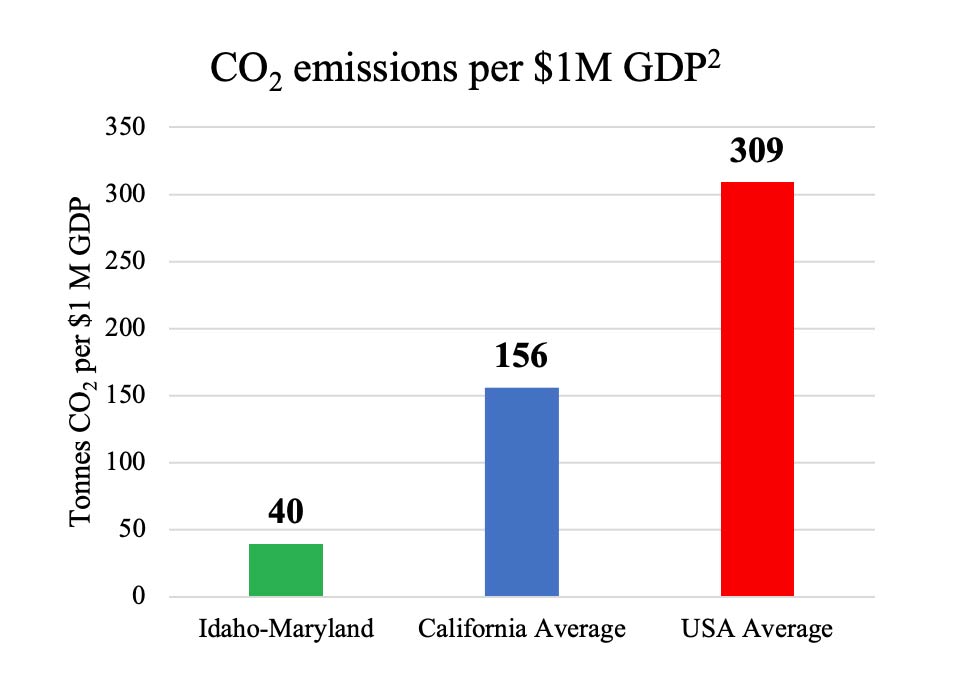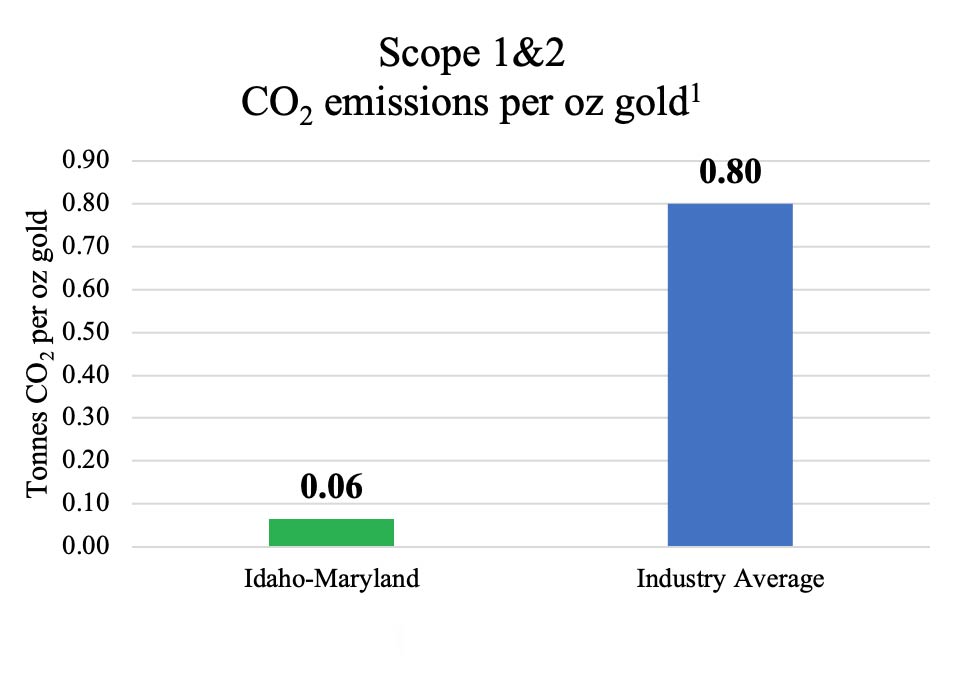CO2 & Electricity
Zero Emission Equipment
The underground min equipment is 100% powered by electricity using rail haulage, electric-hydraulic and pneumatic drills, and electric and battery powered mobile equipment.
The result is a zero-emission underground mine that provides a healthier workplace and reduced environmental impact.
- Greenhouse gas (GHG) emissions less than significant by CEQA thresholds
- GHG emissions much less than the California and USA versus economic output2
- GHG emissions a fraction per oz produced versus the gold industry average1
| Electricity | 4,784 | 67% |
| Employee Commuting | 541 | 8% |
| Engineered Fill placement | 510 | 7% |
| Generator Testing | 607 | 7% |
| Surface Support Equipment | 300 | 4% |
| Concentrate Shipping | 157 | 2% |
| Engineered Fill Trucking | 128 | 2% |
| Misc. | 220 | 2% |
| Freight Delivery | 108 | 2% |
| Total CO2 tonnes per year | 7,355 |


The Project is powered by Nevada County clean energy and Nevada County has a surplus of hydro electric power with ~451,000 MWhr Generated3 vs. ~344,000 MWhr Consumed4 annually
A PG&E 115k kV Transmission Line to Grass Valley operates at less than 50% capacity and an existing 12 kV distribution line is in place at the Brunswick Industrial Site (previously used for saw mill onsite)
The Idaho-Maryland Project uses ~50,000 MWhr per year (average power demand of ~6 MW)
CO2 emissions assumed at average intensity of PG&E grid rather than actual use of 100% hydro-electricity
References
1) Based on Idaho Maryland Mine Project Description & Air Quality Study and assuming production of 100,000 oz per year compared to 2019 estimate by SP Global Market Intelligence
2) Based on Idaho Maryland Mine Project Description & Air Quality Study and assuming production of 100,000 oz per year compared to US and California 2018 greenhouse gas inventories ww3.arb.ca.gov/cc/inventory/pubs/reports/2000_2018/ghg_inventory_trends_00-18.pdf; https://www.eia.gov/environment/emissions/state/analysis/
3) ww2.energy.ca.gov/almanac/renewables_data/hydro/index_cms.php
4) Nevada-County-Energy-Action-Plan


